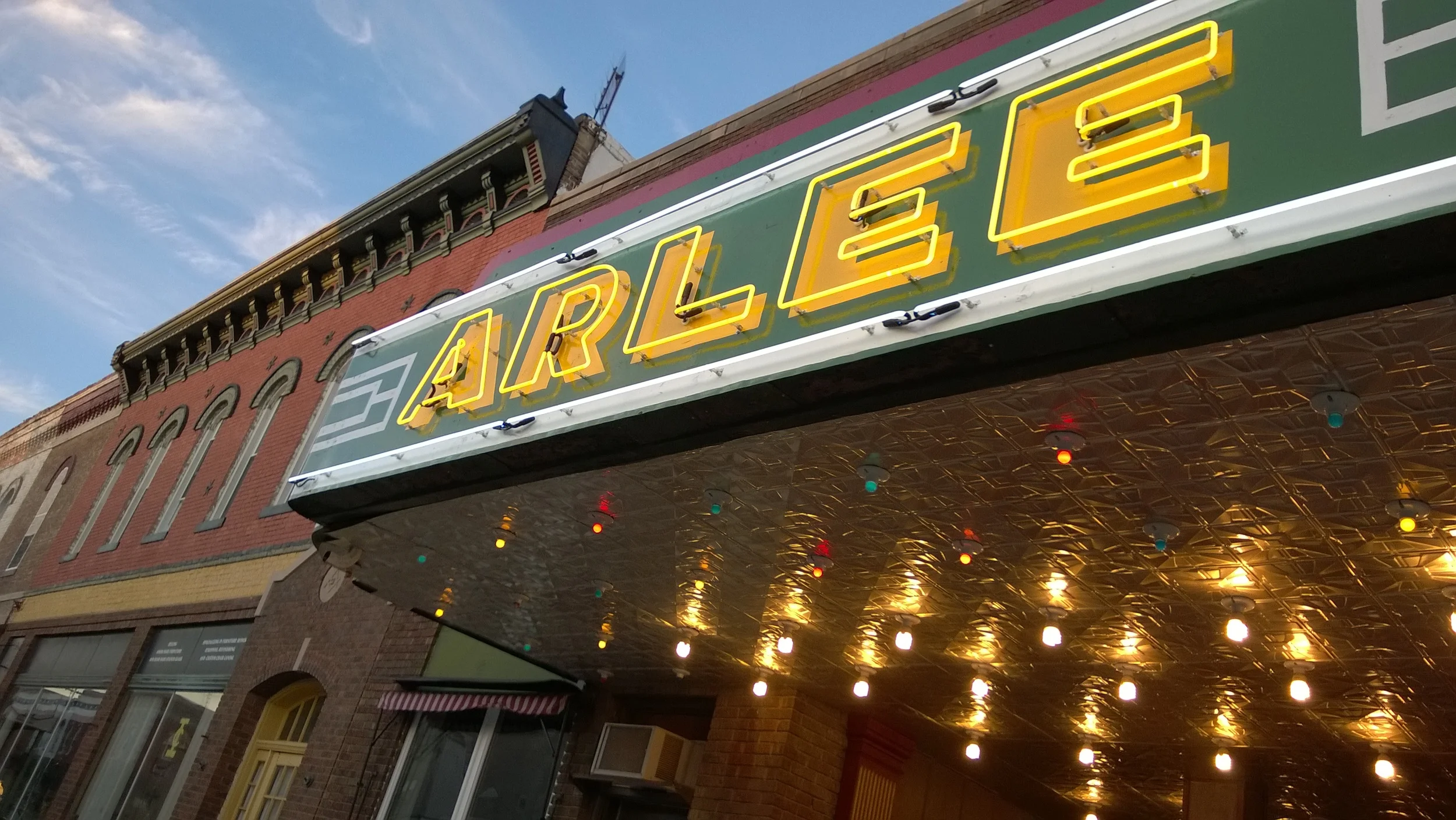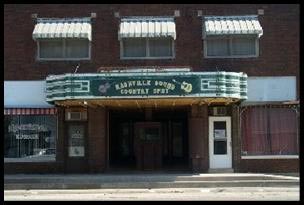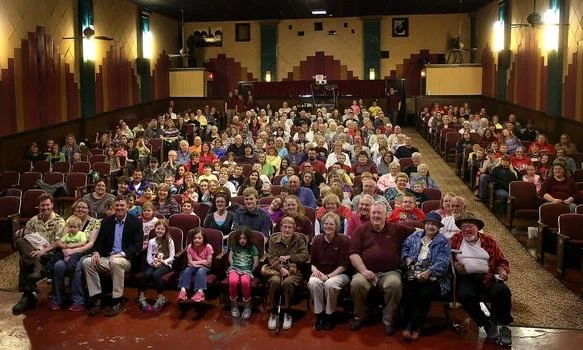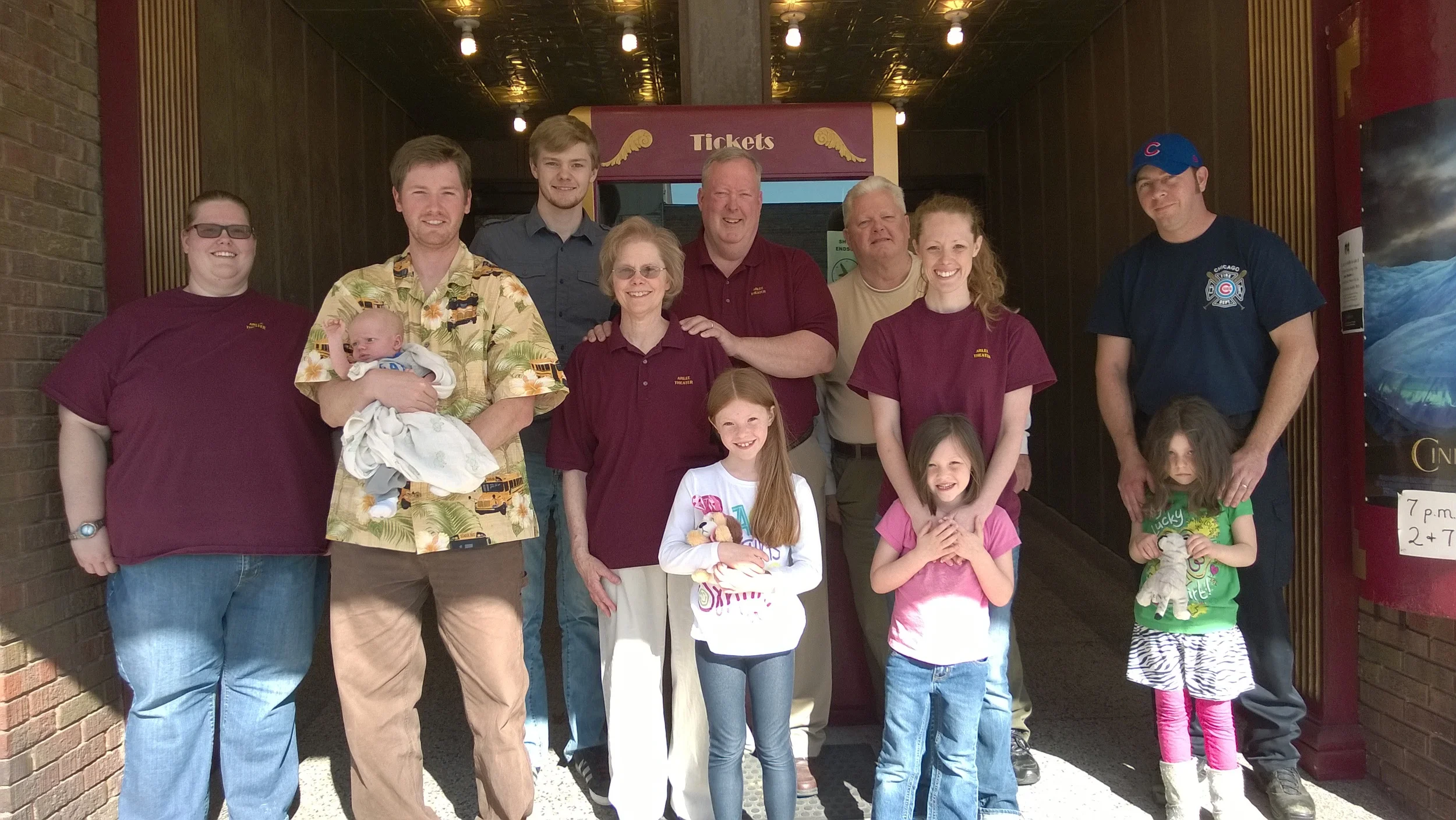For a brief time, the Arlee was known as the "Nashville Sound Country Opry" and only offered live shows.
Opening night in 1936
Grand reopening in 2015 after the seats had been restored.
Before the days of the legendary Route 66, Mason City’s Main Street was part of the Lone Star Route connecting Chicago and St. Louis, and on to Brownsville, Texas. The Midway Garage provided service to travelers, who could dine at the Midway Café and other local eateries.
Roy Gardner built the garage intending that the acoustics would be right for a theater. In 1934 Gardner attained his moment of fame as a star attraction at Ripley’s Chicago Odditorium at the World’s Fair performing with his eight-instrument one-man-band. Frank’s son-in-law, Lou Herman was Gardner’s booking agent.
After Art and Leah Struck purchased the Liberty Theater, Gardner informed them of the unusual garage across the street. Art bought it in 1936 and in three months expanded it and turned it into an Art Deco theater considered lavish for its time and place. Sister-in-law Jessie Struck suggested blending Art and Leah’s names to call it the Arlee. The grand opening on November 19 billed Ginger Rogers and Fred Astaire in “Swing Time.”
The Arlee seated 500 and had patrons waiting in line for the second showing. Tickets were 10 and 25 cents. Peanuts, gum and other snacks were forbidden in order to preserve the beautiful carpet and other appointments. It took projectionist Dale Fancher several years to convince Struck that selling refreshments would help him turn a better profit. Fancher, who owned the White Front Café just north of the old Liberty, worked closely with Struck through the years, rising to role of manager. On occasions after his retirement, Struck reopened the theater for special programs and Fancher always assisted.
Struck sold his equipment to Charles Thomas in the 1960s, who continued the theater’s operation. Thomas sold the business to Larry Rodgers, who kept showing movies there from 1973 until 1979. For a few years the building was used for live Community Theater productions.
Struck sold his building to retired farmers Don and Thelma Keith in 1984, who renamed it Nashville Sound Country Opry. Mr. Keith transformed a rear garage into two dressing rooms and hired a house band. He kept most of the original décor and opened up the stage for live country music shows every Saturday night, even drawing people from out of state.
Keith closed the business in the spring of 2000, and one of the last shows there was a special Sunday performance by Ivan Parker.
Dale Roddy held the property for a short time and made some improvements before deciding to sell the property. John and Gaye Maxson purchased it in 2003 as a family project when prompted by their children Mary, Marcia, Dale and Daniel, who believed the community needed the theater. Several community members came onboard, helping restore the Arlee. Equipment was installed to convert from reel-to-reel to a platter system, and one of the original 1936 Simplex projectors came out of retirement and continued to operate each weekend for another ten years. When the movie industry went digital in 2013, The Arlee Community helped raise the needed funds in order to replace the 77-year-old Simplex with a $45,000 digital projector in order to keep the Arlee doors open. Though still functional, the 1939 projector was finally retired. In 2015 the Arlee Community again also helped physically and financially to restore the tattered 79-year-old seats. Some wider seats were installed in the back rows to accommodate a 21st Century population, and rows were placed farther apart to provide ample leg room and additional wheelchair-accessible spaces. The theater now comfortably seats 350.
With such generous support and help, the Arlee Theater continues to provide family-friendly entertainment. The Arlee is now a 501c(3) organization, overseen by a local board of directors and run by a team of volunteers from the community.
Our Mission
Mason City's Arlee Theater is a volunteer-run nonprofit art deco movie theater and live entertainment venue which offers modern entertainment at vintage prices.
History
The return of the Arlee Theater at 139 S. Main St., Mason City, Illinois is one piece in a patchwork quilt of local entertainment.
Lipman Frank came to Mason City in 1875 and in time acquired the LaForge Building at the northwest corner of Chestnut and Tonica Streets for his clothing and shoe store. He operated the Frank Opera House upstairs, where grand balls were held and Ward Ackerman showed early movies. Traveling plays with famous entertainers were produced there, but most shows were homegrown. Edith Robertson was an accomplished local musician who wrote plays and arranged the music for such shows.
Later, Frank moved his business across the street, and after 1926 the Opera House was used as the Legion Hall. In the mid-1930s, a representative from Chicago’s WLS Barn Dance came to Mason City and recruited local talent to put on a program there.
In 1917, Ackerman moved his movie business to the Pritchett Building at 132 S. Main St. and named it the Liberty Theater. Local pianists including Vera Fink and Mildred “Ditter” Behrends accompanied the silent movies, sometimes with only one day’s preparation.
Across the street was the Midway Garage, built by carpenter/musician Roy Gardner.
Roy Gardner's One Man Band, which he played for Ripley's Chicago Odditorium at the World’s Fair in 1934.
One of several "tattoos" the floor sports from the decades it's seen.











